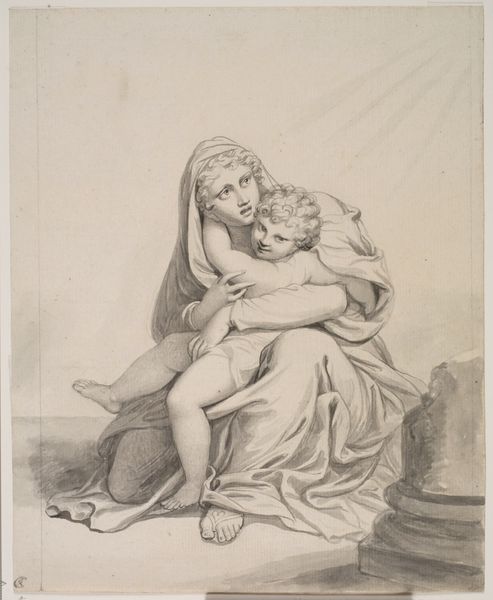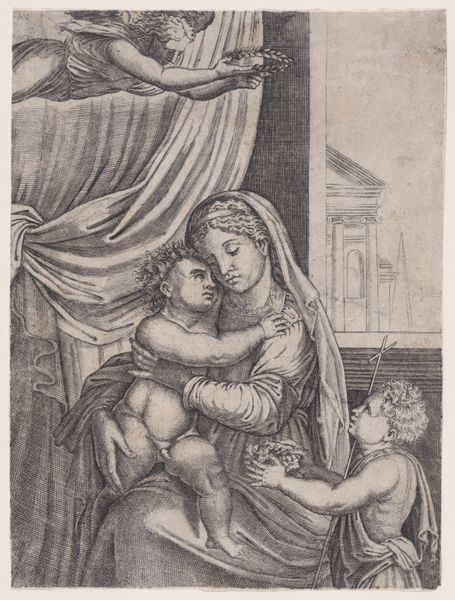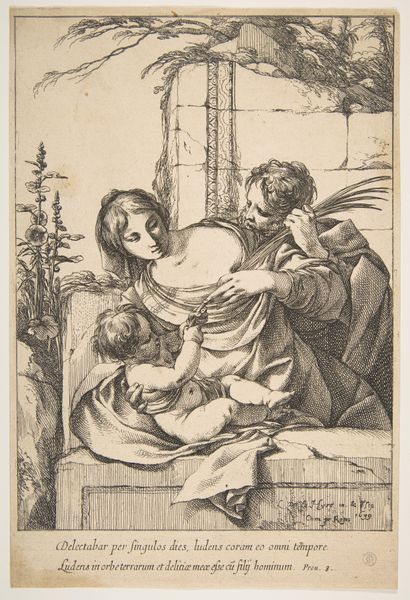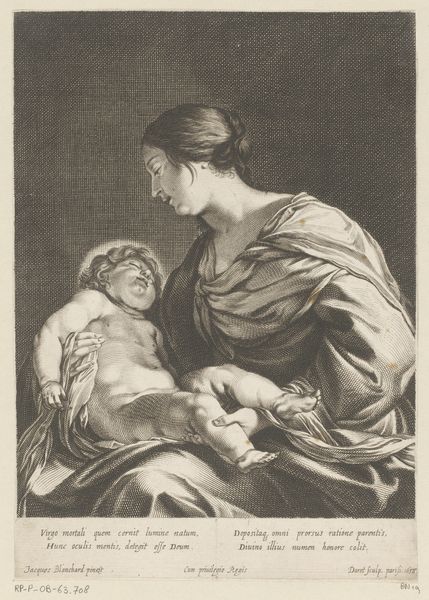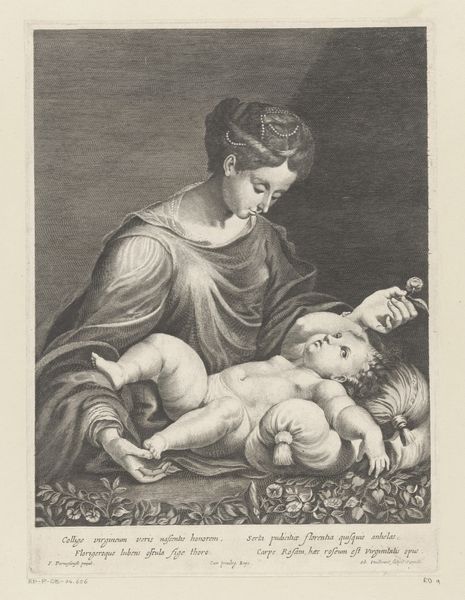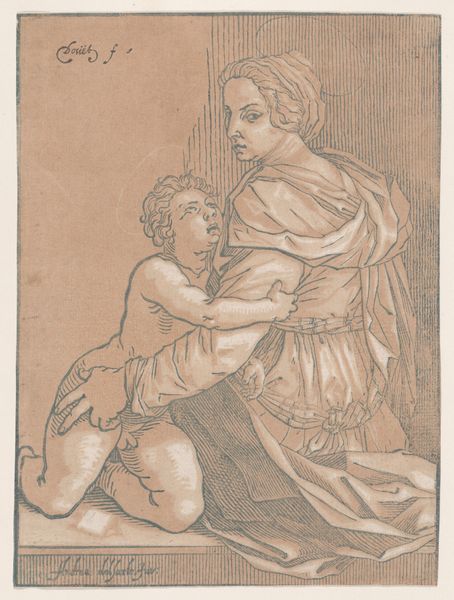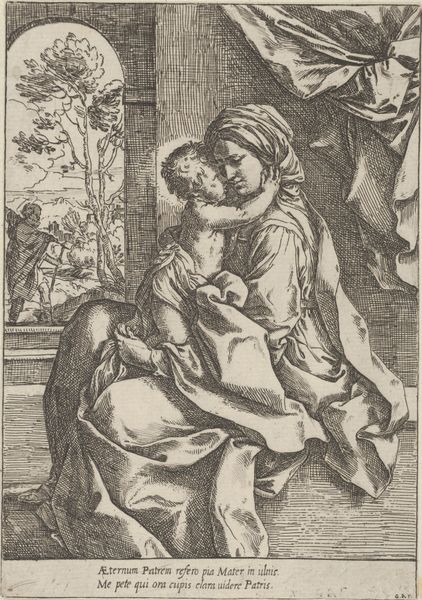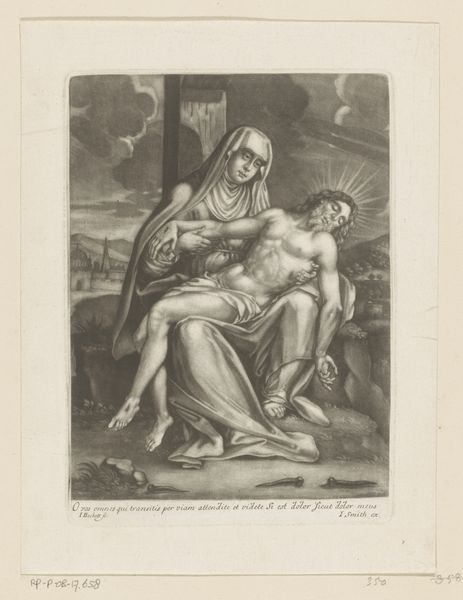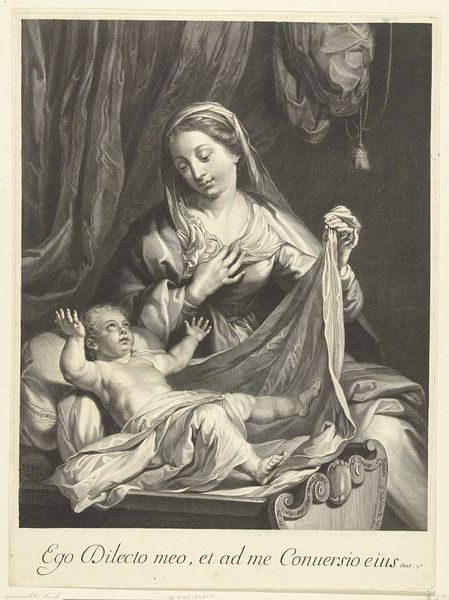
Dimensions: height 227 mm, width 172 mm
Copyright: Rijks Museum: Open Domain
Curator: Looking at this piece, "Maria met Christuskind", or "Mary with Christ Child," a 1762 engraving by Jean Jacques Lagrenée currently residing at the Rijksmuseum, one can sense the prevailing stylistic conventions of the Baroque period. Editor: My initial reaction is one of serene tenderness. The line work, while detailed, conveys an intimate moment rather than a grand, imposing narrative typical of the Baroque. The texture achieved through engraving is remarkable. Curator: Exactly. Consider how engravings like these disseminated imagery and ideology. Prints made art accessible, allowing Baroque aesthetics and religious narratives to circulate among a broader public beyond the elite circles that commissioned grand paintings. Editor: Yes, mass production shifted the art’s role from solely religious or elite circles to engage with wider social values. We see the idealized Madonna and Child – archetypes reinforcing specific roles of women as mothers. But the quiet closeness between the figures seems to offer a softer portrayal than, say, the heroic maternal figures common at the time. Curator: But that's also where the socio-political element resides. This tenderness can also reinforce traditional roles and expectations, even subtly limiting narratives. What sociopolitical statements could be made with accessible, reproductive pieces, during a pre-revolutionary era? How was gender reinforced through works such as these? Editor: It's fascinating to consider the political context influencing what was deemed suitable and desirable to circulate widely. The subtlety of expression perhaps also reflects evolving sentiments about motherhood, becoming increasingly idealized and sentimentalized during this period. The lines have very smooth texture for an engraving. Curator: The choice of medium is interesting too. Prints democratized art consumption but also functioned within specific power structures. It enabled broader patronage, reaching audiences who commissioned artworks in smaller sizes for personal display. Editor: Understanding these factors complicates what might appear at first glance as a straightforward depiction of maternal love. This seemingly tranquil scene sits within a complex web of production, distribution, and the cultural negotiation of gender and class. Curator: Precisely. It serves as a potent reminder that artistic expression is interwoven with societal conditions and biases. Editor: Looking beyond the immediate appeal allows us to consider the role of images in actively shaping cultural perceptions.
Comments
No comments
Be the first to comment and join the conversation on the ultimate creative platform.
